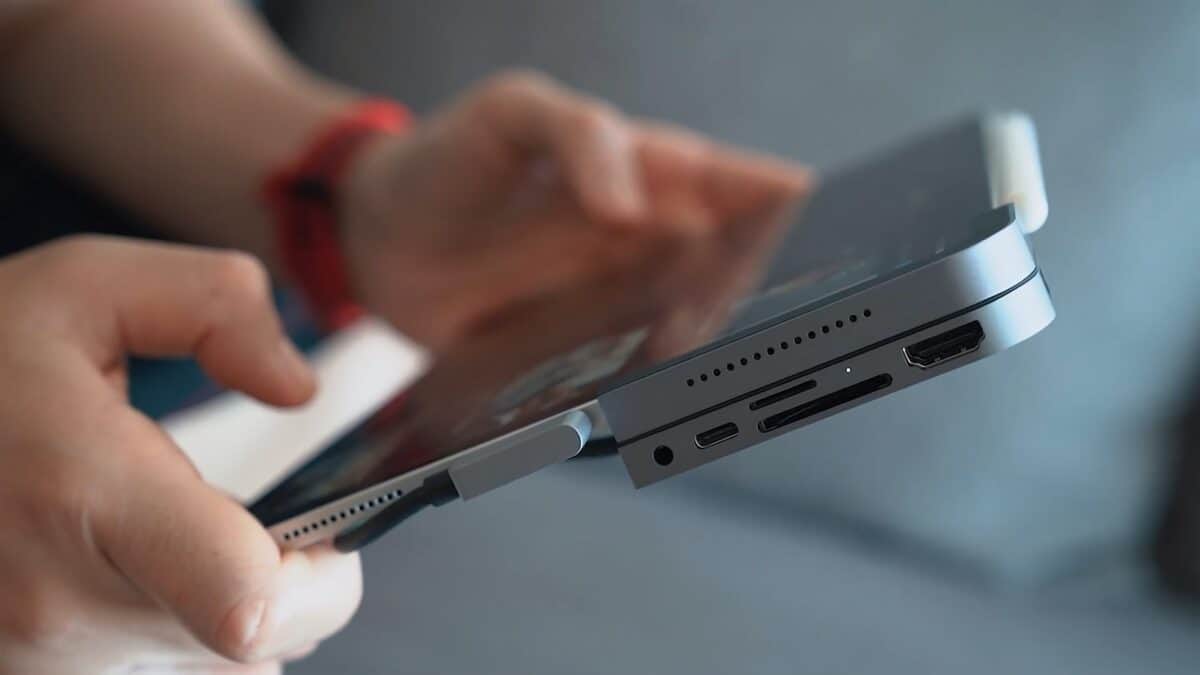4 Facts about Touch Screen
- More than 90% of touchscreens are capacitive.
- Touchscreens have an average durability period of 3 years.
- Almost all touchscreen devices feature a Liquid-Crystal Display, LCD.
- Touchscreen technology features three major components: the touch sensor, controller, and software.
Touch Screen History
The concept of now-ubiquitous touch screen interface was put into words in October 1965, when Eric Arthur Johnson, an engineer at the Royal Radar Establishment in Malvern, England, interested in developing touchscreen for air traffic control, described his ideas for a capacitive touchscreen in a short 2-pages article in (Touch Display – A novel input/output device for computers. Electronics Letters, 1(8), 219-220). It was a device that uses wires, sensitive to fingers’ touches, on the face of a cathode-ray tube on which the computer can write information.
In 1967, E.A. Johnson published another more comprehensive paper on the topic (Touch Displays: A Programmed Man-Machine Interface, Ergonomics, 10(2), 271-277), explaining how the technology worked through diagrams and photographs of a prototype. Johnson was granted a US patent for his invention in 1969 (see the US patent 3482241).
In early 1972, a Danish engineer working in CERN, Bent Stumpe, was asked by Frank Beck, who was in charge of the central control hub in the Super Proton Synchrotron, SPS, control room, to build the hardware for an intelligent system which, in just three console units, would replace all those conventional buttons, switches, etc.
In March 1972, after a few days, Stumpe presented a proposal to build a touch screen with a fixed number of programmable buttons. It also uses a tracker ball as a computer-controlled pointing device – something like a mouse – and a programmable knob.
The first touchscreens were installed in 1973 and remained in operation until 2008.

Touch Screen: How It Worked
The touchscreen technology features three (3) major components: the touch sensor, controller, and software.
The touch panel or sensor features a touch-responsive surface with the passage of electrical current. The voltage changes whenever the screen is touched, thereby signaling the touch location. Touchscreen systems are built on various types of sensors, including capacitive, resistive, and surface acoustic. Most touchscreens are capacitive.

The controller, hardware convert the voltage changes triggered on the touch panel into signals that your phone, computer, etc., can receive.
The software receives such a signal, informing your device, whether phone, computer, etc., of the types of signals sent by the controller. In essence, the software tells your device what and where it is being touched, making it react accordingly.
Touch Screen: Historical Significance
Although introduced in 1965 by E.A. Johnson, touchscreens weren’t commercialized until 1980 when Hewlett Packard, HP, introduced the HP-150, a computer featuring a 9-inch CRT display and Infrared detectors used to detect any finger interactions with the device’s screen.
Also, in the early 1980s, Delco Electronics of General Motors replaced non-essential functions of automobiles, such as transmission, braking, steering, etc., with electro-mechanical systems. This resulted in the introduction of the Electronic Control Center, ECC, featuring various peripheral sensors, antenna, servos, and a monochrome CRT touchscreen used majorly for input and output.
In 1982, the University of Toronto introduced Multi-Touch Technology. By 1985, they’ve invented a multi-touch tablet that uses capacitance.

The touchscreen has become a dominant feature of modern tech devices.
©Photo by Onur Binay on Unsplash – Original / License
In 1987, Casio also made their Casio PB-100 pocket computer commercially available. The pocket computer featured a touchscreen with 16 touch areas on its Led-crystal Display, LCD, graphic screen.
Ever since, touchscreen technology has experienced rapid growth and acceptance, particularly because of the ease of operation it offers users. The first touchscreen phone was made commercially available by IBM in 1994, called Simon. This phone offered some basic apps–email, an alarm clock, to-do list, and faxing. But this phone was not intuitive, and wasn’t very practical with a $1000 price tag.
It wasn’t until the introduction of the iPhone by Steve Jobs in 2007, which he referred to as “An iPod, a phone, and an Internet communicator,” that touchscreen technology became a force to be reckoned with. This phone opened the door to the world of app creating, and limitless possibilities for information to be accessed, all at the touch of a finger. Touchscreen technology now dominates the market, and it’s hard to imagine it not being a key component of ever-evolving technology for years to come.